Knowing how to cut concrete will minimize the chance of unwanted cracks in your concrete and can be done with ease if you have the right tools.
3 best ways of cutting concrete:
- Concrete Saw
- Circular Saw
- Angle Grinder
Regardless of which tool you use, you will need to use a diamond blade specifically designed for cutting concrete.
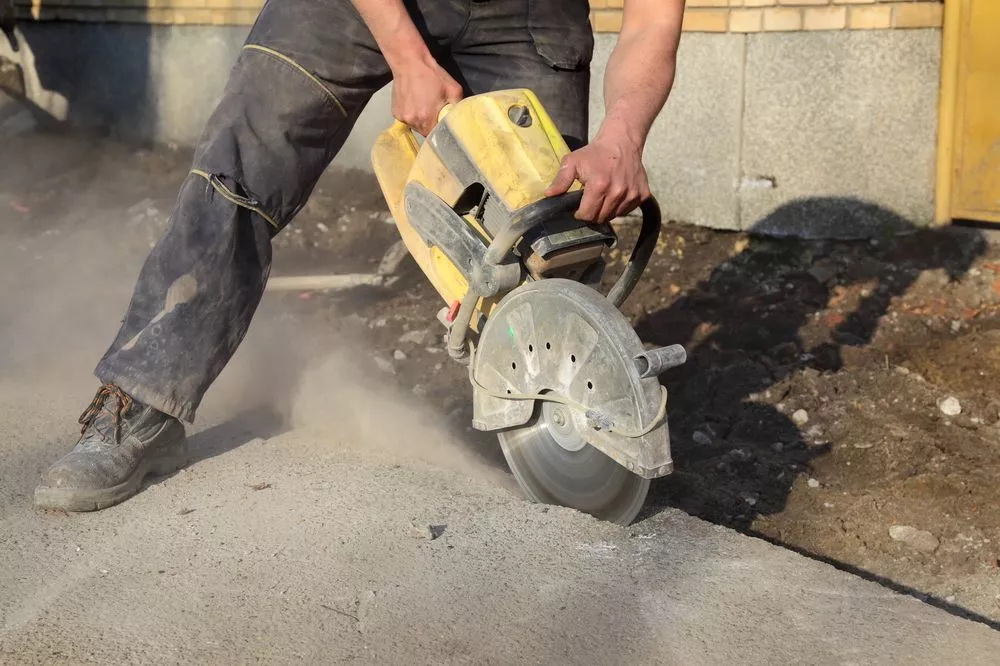
How To Cut Concrete
The best way to cut through concrete is to use a diamond-cut blade.
These saw blades are specifically designed for cutting through concrete and are perfect for the job.
Diamond cut blades come in all different sizes, and the quality ranges from brand to brand.
For most jobs, water will be needed to help cool the diamond blade down.
If you do not, the saw blade itself with heat up and warp out of shape, and you will notice your cut lines will start to look wavy.
What Is The Purpose Of Cutting Concrete
As the curing process of concrete begins, water evaporates and your concrete will begin to shrink.
Naturally, if your concrete is not cut, this shrinkage can and/or will crack your concrete in places that will not look good, and will most definitely not be straight.
Unwanted cracks can completely destroy your concrete’s image, as well as jeopardize the overall strength and durability of the concrete.
The overall purpose of cutting concrete is to form a weak point in the concrete to help pre-guide where the concrete is going to crack.
These cuts are also known as…
- Control joints
- Expansion joints
- Concrete Cut
Ideally cutting your concrete should be made within 24 hours after placing and finishing your concrete, however, some jobs I have worked on, cutting of the concrete was done a few days later and has worked fine.
Unless you have a specific green cut saw and blade, most concrete is usually a little soft to be cut within the 24-hour window.
On hot summer days, concrete cutting is sometimes done within minutes of finishing the concrete slab.
All in all, cutting your concrete should be done as soon as possible to minimize the chance of unwanted concrete cracks.
Concrete cuts should be cut to a depth of 25% of the concrete’s thickness and should be cut into squares no larger than 2 to 3 times the thickness in feet.
So for a 4-inch (100mm) thick pad, your cuts will be no longer than 8 to 12 feet apart and cuts with be to a depth of 25mm or 1 inch.
“as an Amazon Associate, I may earn from qualified purchases”
How To Cut Concrete With A Grinder
Smaller diamond-cut saw blades like the ones featured in the video above are perfect for cutting small concrete jobs like footpaths, small patios, tiles, marble etc.
Certain diamond blades can be used wet or dry, and other are designed for use with water only.
How to cut through concrete using a grinder
- Mark out where you intend on cutting the concrete
- Plug in the grinder with the appropriate diamond blade disk
- Ready the water if you are using a wet cut blade
- Put on safety gear. This should include, safety glasses, gloves, ear muffs, steal capped boots, and a breathing mask
- Cut along the pre-marked line.
- Wash off concrete dust and slurry
Straight lines are easier to make when you have a guide.
Use a thin plank placed alongside the pre-guided cut line to hold the diamond wheel against while you cut.
You can kneel on the board as you cut along it to hold it in place or ask someone to stand on the board while you cut.
How To Cut Concrete With A Circular Saw
Using a circular saw to cut concrete is one of the easiest ways to achieve your expansion joints.
A jig can be used alongside the circular saw to guide a nice straight cutting line.
Pre-guided lines very quickly disappear in the dust or slurry created when cutting the concrete so a jig is usually very helpful and worth setting up.
How To Cut Concrete Using A Circular Saw
- Mark out where you will be cutting your concrete
- plug in the circular saw fitted with the appropriate-sized diamond-cut blade.
- Ready water if you are cutting long lengths. In some cases, you can hold the hose yourself and spray the diamond wheel while cutting, or you may need to get someone to lend a hand
- Put on safety gear. This should include, safety glasses, gloves, ear muffs, steel-capped boots, and a breathing mask
- Cut along the pre-marked line, or set up a jig guide with a long straight board
- Wash off concrete dust and slurry.
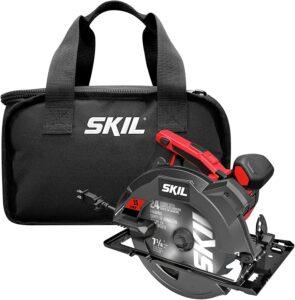
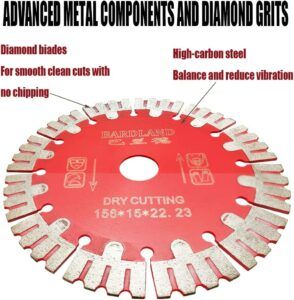
How To Cut Concrete Using A Concrete Saw
I have personally cut kilometers of concrete with hand-held concrete saws, and there is a huge difference between brands, including the weight of the saw, the comfort of the saw, the overall usability of the saw, and the loudness of the saw.
Using a hand held concrete saw is a great way to cut concrete, especially if there are a few cuts to do.
How To Cut Concrete Using A Concrete Saw
- Mark out where you will be cutting your concrete
- plug-in or fuel up the concrete saw fitted with the appropriate-sized diamond-cut blade.
- Ready water if you are cutting long lengths. In some cases, you can hold the hose yourself and spray the diamond wheel while cutting, or you may need to get someone to lend a hand
- Safety gear is on. This should include, safety glasses, gloves, ear muffs, steel-capped boots, and a breathing mask
- Cut along the pre-marked line, or set up a jig guide with a long straight board
- Wash off concrete dust and slurry.
How To Cut Concrete With A Concrete Groover
To be honest, you don’t really cut with a groover, you groove!
Concrete groovers are perfect for pre-guided expansion joints, and the grooving process is done before the concrete is to hard to work with, this means no coming back with a concrete saw.
I would not suggest a groover for larger jobs but are ideal for patios, footpaths, small shed floors, etc.
Tips On How To Cut Concrete
There are a few more tips on how to cut concrete that I shall bring to your attention.
Concrete will crack for a few reasons, and knowing how concrete works, and where natural weak points are will go a long way in minimizing the chance of your concrete cracking.
Tips on how to cut concrete
- Cuts should be cut to 25% of the overall concrete’s depth. A 100mm slab will have a saw cut 25mm deep.
- Overall square size is to be no more than 2 – 3 x the thickness in feet. 4 inch thick pad will be cut in squares 8 – 12 feet.
- Concrete cracks will normally start from weak points or from compromised areas. If you are concreting around a building with sharp corners, cut lines ( Expansion joints ) should meet the corner of the building, Chances are if the concrete is going to crack, it will be of an existing sharp edge like a corner
- Use water when cutting the concrete. Saw blades will cut smoother, and will not overheat and warp out of alignment. By using water there will be minimum concrete dust.
- Always mark out where the cut lines are going. You can use chalk, vivid or a pencil
- Slurry and/or concrete dust will form and cover up your lines. A jig like a long piece of 6×1 timber works well. Place the timber along the line and stand on this while you cut up against it. This will give you a nice straight edge to cut along even when you cannot see the line. Standing on the board will stop it from moving off the marked line.
- If using an electric saw of any kind be mindful of power cords and water.


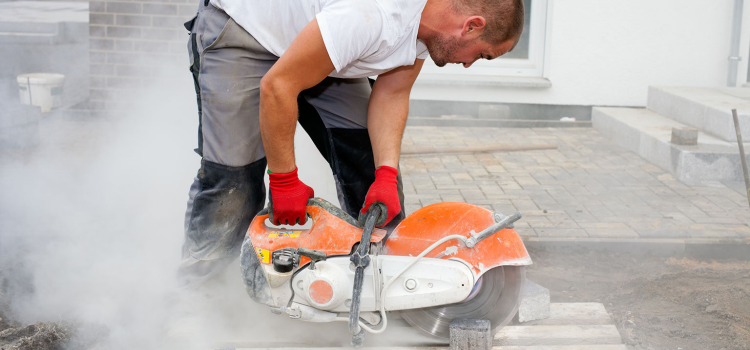
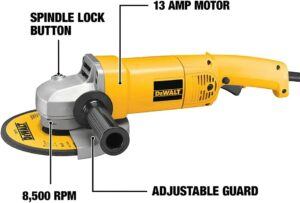

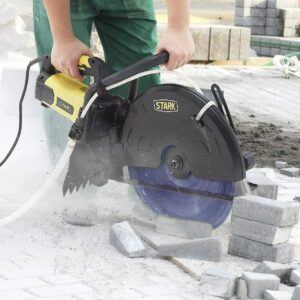

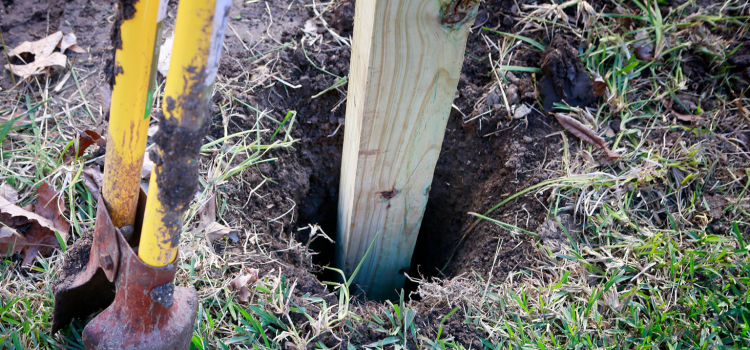
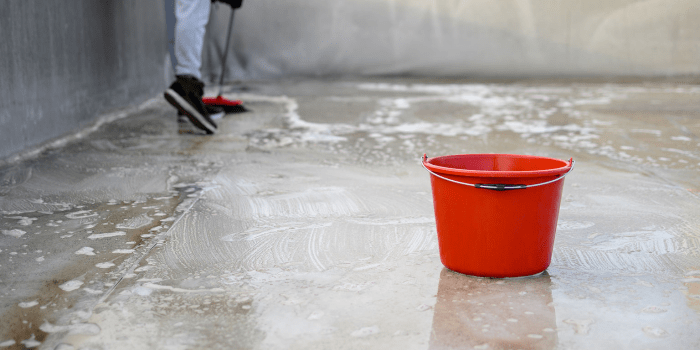
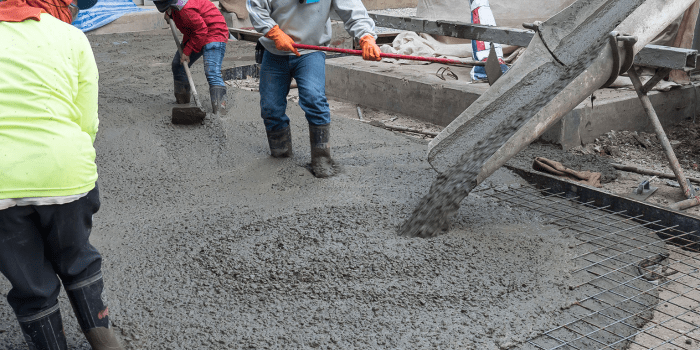

Thanks for mentioning that a concrete cut should be 25% of the overall depth. I’m hoping that I can hire a concrete cutter to help me build a patio. I’d like to hire a reputable concrete company this week to take care of it.
You are more than welcome 🙂
I hope your concrete patio is a success. Please do feel free to ask any other questions at any time and I will do my best to help you out.
Cheers.